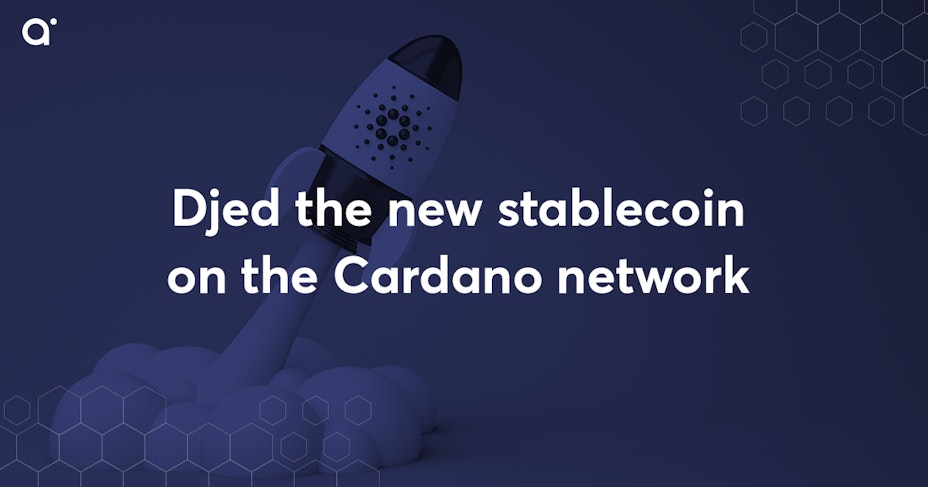Djed the new stablecoin on the Cardano network
- 5 minute read

The stablecoin called Djed was launched on Cardano's network. Like UST, stablecoin is an algorithmic stablecoin that uses cryptocurrency as collateral. We all know how this ended. How will Djed make sure they don't become the new UST?

Table of Contents
- What is Djed?
- How does Djed aim to prevent depegging?
- SHEN as a reserve coin
- How will Djed's launch affect Cardano's ecosystem?
What is Djed?
Djed is an algorithmic stablecoin on Cardano's blockchain. The stablecoin is pegged 1:1 to the US dollar. Djed is created by the developers of the DeFi project Coti, which also operates on the Cardano network. Djed is intended to compete with popular stablecoins such as USDC, USDT and BUSD running on the blockchains of Binance and Ethereum . Djed differs in the fact that the coin is backed by ADA tokens. This is different from USDC, USDT and BUSD. Those stablecoins in fact use dollars as collateral.
How does Djed aim to prevent depegging?
One stablecoin that also used cryptocurrencies as collateral was UST, which used LUNA as collateral. This eventually went wrong, when a depeg caused a 99% drop. Nevertheless, developer Coti persevered and successfully launched the project. How does Djed aim to counter liquidity problems? For each Djed token, at least four dollars and up to eight dollars of underlying assets are reserved. Currently, the reservation ratio is almost 600%. This means that each DJED coin, has $6 in collateral. The mechanism is called overcollaterised. Thanks to this mechanism, Djed should remain stable and avoid a scenario like UST.
SHEN as a reserve coin
Stability is created by Shen Reserve Coin (SHEN). SHEN ensures a healthy reserve ratio in the contract. The coin does this by encouraging users to stake ADA in the contract. If you hold SHEN, you receive a share of the mint and burn fees.
Moreover, the price of SHEN is highly correlated with the ADA price. If the ADA price rises, the price of SHEN rises with it and the other way around.
You can also receive farming rewards on your SHEN tokens if you offer liquidity on DEXs. The rewards vary by DEX.
How will Djed's launch affect Cardano's ecosystem?
As we discussed in an earlier blog, activity around the Cardano ecosystem is growing . Especially for developers, the network is popular. However, this is not yet reflected in Cardano's price. Consequently, many feel that ADA's price is undervalued. The launch of Djed will make Cardano's ecosystem more comprehensive in terms of functionalities.
In addition, the overcollateralisation mechanism is attractive to investors. DeFi projects on the network could potentially start benefiting from this. We already see that the DeFi project Fluid, has already integrated Djed and MuesliSwap plans to offer annual returns to Djed users on the platform in the future by launching Liquidity pools. It expects the annual return for staking DjED to be between 10-15% and even around 25% in the first month.
Conclusion
Djed is unique compared to USDC, USDT and BUSDC thanks to its overcollaterised mechanism. Like UST, it is a stablecoin that uses cryptocurrency as collateral, namely ADA tokens. To avoid a similar fate (depeg), at least $4 of collateral is set aside for every dollar of value. This is regulated and stabilised by the reserve currency SHEN. Immediately after the launch, there is interest from the ecosystem. For instance, Fluid and MuesliSwap, have already integrated Djed and more projects may join in the future. The overcollaterised mechanism is in particular interesting for investors. It could give a big boost to Cardano's ecosystem. It will therefore be very interesting to keep an eye on whether Djed is and remains safe and whether interest in the project will increase in the near future.


